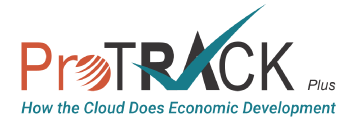If you run an Economic Development Organization or are a part of it, it goes without saying that reporting to your stakeholders and leadership is your weekly practice. You must document all the activities, data, and revenue to present them to your elected and appointed leadership. And here is why it is imperative – the better we communicate what we do, the better we stay on track to deliver what we promised in the strategic plan.
Efforts that are measured will improve. Efforts that are measured and reported will improve significantly!
As important as reporting to the leadership, simple and concise communication is also instrumental in delivering a clear message. Thus, you should know how to communicate your EDO’s value to your leadership. After all, EDOs and their leadership go hand in hand for streamlined processes and unhindered growth.
However, the specific tracking and reporting requirements may vary depending on your organization, industry goals, and leadership preferences, but the basics of communication stay the same. Open communication and collaboration with your leadership are vital in understanding their needs and delivering reports that provide value and insights.
How to Report Effectively to Your Leadership?
When determining what your leadership wants to track and report, best to have direct communication with them. Here are some steps you can take to improve the way EDOs communicate with stakeholders and what and how to report for a better outcome.
1. Schedule a Meeting
Schedule a “Meet for Metrics” event. Request a meeting with your leadership and relevant stakeholders and ask them “What metrics are important to them? This simple question will begin a cascade of amazing ideas and conversations. You can hold the meeting in person, through email, or through collaboration tools.
2. Prepare a List of Questions.
Before the meeting, create a list of questions to gather specific information. For example, you can inquire about the key performance indicators (KPIs) they want to track, the frequency and format of reporting, and any specific metrics or data points of interest.
3. Discuss Goals and Objectives.
Understand the overarching goals and objectives of your organization. Once you know the goals, you will be able to align the tracking and reporting efforts with the strategic direction of the EDO.
4. Seek Clarity on Priorities.
Ask for clarification on the most important metrics or areas of focus from your leadership. This will ensure that you prioritize the right data and provide meaningful insights on a frequency that meets or exceeds their expectations
5. Understand the Reporting Format.
Reporting is effective only when it can be understood. You should know if your leadership has any specific reporting templates, dashboards, or visualizations in mind. You can then tailor your tracking and reporting processes according to their liking.
6. Determine the Frequency of Reporting.
Discuss how often your leadership wants to receive reports. It could be weekly, monthly, quarterly, or ad hoc. Understanding the reporting frequency will help you establish a timeline and allocate resources accordingly.
7. Collaborate on Defining Metrics.
Work with your leadership to define the specific metrics that align with their goals. Creating metrics without the input of your stakeholders is like leaving on a trip without your GPS. You have no idea where you will go. Seek their input and expertise to ensure the selected metrics are meaningful and actionable. Select repeatable metrics. In other words, only measure things for which you can easily collect data, and which are refreshed on a frequency that matches your stakeholder’s needs.
8. Document The Requirements
After the meeting, document the key insights, metrics, and reporting preferences discussed. This will serve as a reference for developing your tracking and reporting processes.
9. Regularly Review, Reassess, and Redesign
. As you start implementing the tracking and reporting processes, maintain an open line of communication with your leadership. Your world changes very fast. Make sure your metrics mirror these swift changes.
10. Fail Early, Fail Fast, and Fail Often
Fail early, fail fast, and fail often…on your way to success. Create a non-attribution environment where it is okay to say that the goals and metrics we set six months ago are no longer the ones we need to follow today. This environment encourages maximum buy-in and full participation from your leadership to help make your EDO the most agile possible.
Undoubtedly, the right reporting is the essence of communicating your EDO metrics. But, when every EDO is becoming technologically advanced, you can’t rely on traditional ways of paper notes and Excel sheets. This is where ProTRACKPlus comes in!
Make Reporting Easier and Effective With ProTRACKPlus
ProTRACKPlus is an effective tool for creating reports. It allows you to generate reports instantly by utilizing the data gathered for Projects, Contacts, and Companies.
The range of reports you can create includes the Employment and Wages report, the Capital Investment report, as well as a comprehensive report capturing all organizational activities. This feature is particularly helpful for capturing activities that you may not have time to report individually. Additionally, ProTRACKPlus includes an exclusive and exceptional reporting feature known as the Report Generator. This powerful tool enables you to generate reports instantly using all the data collected for Projects, Contacts, and Companies. Moreover, you can easily export these reports to Excel, allowing for enhanced visualization through the use of pivot tables, charts, and graphs.
ProTRACKPlus simplifies the process of keeping your leadership informed and simplifies communicating your EDOs value. Experience the ease of communication with our no-obligation 30-minute demo. Call us to book a slot today!

